Zeyi Yang in Wired:
 What do a mobile shooting game, a nuclear power plant, and a local Chinese government office have in common? In the past two months, they have all tried incorporating DeepSeek’s R1 artificial intelligence model into their businesses in an attempt to ride the wave of the homegrown tech company’s viral rise.
What do a mobile shooting game, a nuclear power plant, and a local Chinese government office have in common? In the past two months, they have all tried incorporating DeepSeek’s R1 artificial intelligence model into their businesses in an attempt to ride the wave of the homegrown tech company’s viral rise.
Ever since the Chinese AI startup became a global sensation, DeepSeek has dominated headlines in China—but the news has almost nothing to do with DeepSeek itself. Instead, companies across nearly every industry are racing to announce that they have found a way to include DeepSeek’s open source models in their corporate strategy. Some have found genuine uses for the domestic, affordable AI model with cutting-edge capabilities, while others are merely doing it for the publicity boost or to virtue-signal their national pride.
More here.
Enjoying the content on 3QD? Help keep us going by donating now.

 Given the chance to become a movie director in Hollywood or a professor of philosophy at Harvard, I imagine very few of us would choose the academic life. The money and fame of being a movie director are far more tantalizing than teaching Plato, Kant, or Simone de Beauvoir. Terrence Malick chose to become a movie director instead of a philosophy professor, but not for the reasons you might think. It was not money and fame that convinced him, but the inability of philosophy courses to help “him understand himself and his place in the order of the cosmos” as Martin Woessner explained in a
Given the chance to become a movie director in Hollywood or a professor of philosophy at Harvard, I imagine very few of us would choose the academic life. The money and fame of being a movie director are far more tantalizing than teaching Plato, Kant, or Simone de Beauvoir. Terrence Malick chose to become a movie director instead of a philosophy professor, but not for the reasons you might think. It was not money and fame that convinced him, but the inability of philosophy courses to help “him understand himself and his place in the order of the cosmos” as Martin Woessner explained in a  Relying on an experienced team of scientists and $200 million in initial funding, Lila has been developing an A.I. program trained on published and experimental data, as well as the scientific process and reasoning. The start-up then lets that A.I. software run experiments in automated, physical labs with a few scientists to assist.
Relying on an experienced team of scientists and $200 million in initial funding, Lila has been developing an A.I. program trained on published and experimental data, as well as the scientific process and reasoning. The start-up then lets that A.I. software run experiments in automated, physical labs with a few scientists to assist. The early days of the second Trump Administration have been greeted with both shock and a search for lessons from history. Journalists have turned to the Nixon Administration’s attempts to “impound” congressionally allocated funds as both a precedent for Trump’s actions and evidence of their illegality. The rollback of DEI and the targeted firings of women and Black leaders across the military and the civil service is redolent of the southern “Redemption” that brought Jim Crow to power in the 1870s and 1880s after the end of Reconstruction. Notably absent in many of these discussions is the last time mass firings and large-scale workplace intimidation occurred in the federal government: the McCarthy Era and the Second Red Scare of the late 1940s and early 1950s.
The early days of the second Trump Administration have been greeted with both shock and a search for lessons from history. Journalists have turned to the Nixon Administration’s attempts to “impound” congressionally allocated funds as both a precedent for Trump’s actions and evidence of their illegality. The rollback of DEI and the targeted firings of women and Black leaders across the military and the civil service is redolent of the southern “Redemption” that brought Jim Crow to power in the 1870s and 1880s after the end of Reconstruction. Notably absent in many of these discussions is the last time mass firings and large-scale workplace intimidation occurred in the federal government: the McCarthy Era and the Second Red Scare of the late 1940s and early 1950s. Talk about truth in advertising: MAYHEM is its own charm offensive, a massive attack of good vibes. It is a project designed to remind listeners why they fell in love with her in the first place, before the jazz belting or the traditional singer-songwriter gravitas or movie stardom. Inspiration from fiancé Michael Polansky, entrepreneur and one of the album’s executive producers, to return to her pop roots prompted an internal survey—Gaga told EW that instead of seeking to reinvent her sound, “I started to think about what makes me me? What are my references? What are my inspirations?” MAYHEM, then, isn’t the sound of someone reheating her nachos on the sly and trying to pass them off as fresh—it’s a full-on cooking show devoted to the art of nacho-reheating.
Talk about truth in advertising: MAYHEM is its own charm offensive, a massive attack of good vibes. It is a project designed to remind listeners why they fell in love with her in the first place, before the jazz belting or the traditional singer-songwriter gravitas or movie stardom. Inspiration from fiancé Michael Polansky, entrepreneur and one of the album’s executive producers, to return to her pop roots prompted an internal survey—Gaga told EW that instead of seeking to reinvent her sound, “I started to think about what makes me me? What are my references? What are my inspirations?” MAYHEM, then, isn’t the sound of someone reheating her nachos on the sly and trying to pass them off as fresh—it’s a full-on cooking show devoted to the art of nacho-reheating.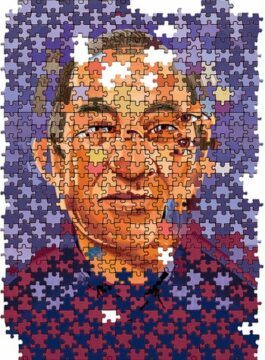 Ping-pong is not a game that lends itself well to chatter. It demands sharp focus, quick reflexes, and a light touch, and the dozen players who have gathered this Monday afternoon at PingPod, a table-tennis venue on West 99th Street, are locked in the wordless rhythms of the back-and-forth. Aside from the occasional “Nice spin!” or grunt of self-reproach, the room is filled with the hollow percussion of little white balls glancing off paddles, skipping over the tops of the black tables, and rattling across the floor.
Ping-pong is not a game that lends itself well to chatter. It demands sharp focus, quick reflexes, and a light touch, and the dozen players who have gathered this Monday afternoon at PingPod, a table-tennis venue on West 99th Street, are locked in the wordless rhythms of the back-and-forth. Aside from the occasional “Nice spin!” or grunt of self-reproach, the room is filled with the hollow percussion of little white balls glancing off paddles, skipping over the tops of the black tables, and rattling across the floor.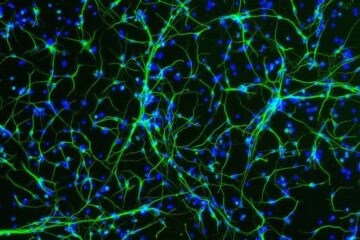 Women’s brains are superior to men’s in at least in one respect — they age more slowly. And now, a group of researchers reports that they have found a gene in mice that rejuvenates female brains. Humans have the same gene. The discovery suggests a possible way to help both women and men avoid cognitive declines in advanced age. The
Women’s brains are superior to men’s in at least in one respect — they age more slowly. And now, a group of researchers reports that they have found a gene in mice that rejuvenates female brains. Humans have the same gene. The discovery suggests a possible way to help both women and men avoid cognitive declines in advanced age. The  How irreversible, how irreparable is this process of mass vulgarization? Judging by the sphere of literature (the sphere closest to me), the path toward a reestablishment of high quality is not yet closed off, not yet taken from us, even if it will require a significant concentration of abilities and efforts. In principle, and according to the very nature of art—according to its flexibility and multifacetedness—the elite and the popular
How irreversible, how irreparable is this process of mass vulgarization? Judging by the sphere of literature (the sphere closest to me), the path toward a reestablishment of high quality is not yet closed off, not yet taken from us, even if it will require a significant concentration of abilities and efforts. In principle, and according to the very nature of art—according to its flexibility and multifacetedness—the elite and the popular 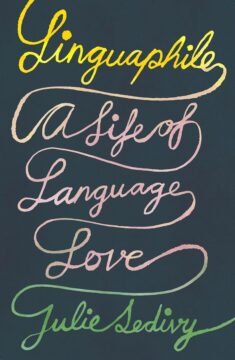 “If there is one feature that defines the human condition, it is language.” This pronouncement appears on the dust jacket of the new memoir by the linguist Julie Sedivy, Linguaphile: A Life of Language Love, but the idea dates back at least to Aristotle, who asserted that what distinguishes humans from other creatures is “logos,” our ability to think rationally and persuade others through language.
“If there is one feature that defines the human condition, it is language.” This pronouncement appears on the dust jacket of the new memoir by the linguist Julie Sedivy, Linguaphile: A Life of Language Love, but the idea dates back at least to Aristotle, who asserted that what distinguishes humans from other creatures is “logos,” our ability to think rationally and persuade others through language. Several years ago, I left my medical practice for a long vacation. On the morning of my first day back, my alarm went off. I pushed the button in and, for a few minutes, lay with the light off. Then, one at a time, I lowered my feet to the floor. The slow process that would transform me back into an anaesthesiologist had begun.
Several years ago, I left my medical practice for a long vacation. On the morning of my first day back, my alarm went off. I pushed the button in and, for a few minutes, lay with the light off. Then, one at a time, I lowered my feet to the floor. The slow process that would transform me back into an anaesthesiologist had begun. In the nuclear age that followed Oppenheimer’s creation of the atomic bomb, America’s technological monopoly lasted roughly four years before Soviet scientists achieved parity. This balance of terror, combined with the unprecedented destructive potential of these new weapons, gave rise to mutual assured destruction (MAD)—a deterrence framework that, despite its flaws, prevented catastrophic conflict for decades. The stakes of nuclear retaliation discourage each side from striking first, ultimately allowing for a tense but stable standoff.
In the nuclear age that followed Oppenheimer’s creation of the atomic bomb, America’s technological monopoly lasted roughly four years before Soviet scientists achieved parity. This balance of terror, combined with the unprecedented destructive potential of these new weapons, gave rise to mutual assured destruction (MAD)—a deterrence framework that, despite its flaws, prevented catastrophic conflict for decades. The stakes of nuclear retaliation discourage each side from striking first, ultimately allowing for a tense but stable standoff.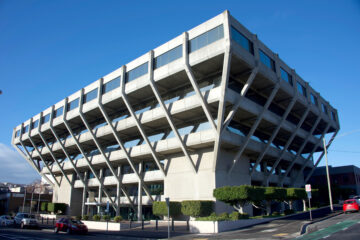 To enter the Rudolph retrospective at the Met is to be seduced. Enveloped in the museum’s 20th-century art galleries, the clean lines and daring spirit of Rudolph’s drawings place him comfortably in the company of the modern masters nearby. His geometric precision and imaginative forms echo Russian Constructivists like El Lissitzky. Exhibition photographs of Rudolph’s built works alluringly capture the interplay between light and shadow that animate the interiors and exteriors of his massive concrete structures. One featured building is a levitating layer cake improbably balanced on fluted columns; in another mock-up, a concrete snake of triangular apartment buildings slithers its way across Manhattan.
To enter the Rudolph retrospective at the Met is to be seduced. Enveloped in the museum’s 20th-century art galleries, the clean lines and daring spirit of Rudolph’s drawings place him comfortably in the company of the modern masters nearby. His geometric precision and imaginative forms echo Russian Constructivists like El Lissitzky. Exhibition photographs of Rudolph’s built works alluringly capture the interplay between light and shadow that animate the interiors and exteriors of his massive concrete structures. One featured building is a levitating layer cake improbably balanced on fluted columns; in another mock-up, a concrete snake of triangular apartment buildings slithers its way across Manhattan.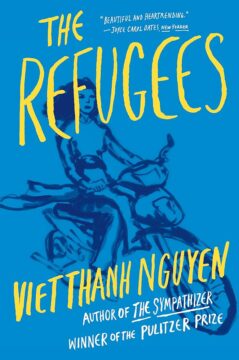 It is safe to say that perceptions of migrants are contradictory. In their countries of origin, they are sometimes celebrated for having embarked on adventures and sometimes criticized as having abandoned their homes. In the countries of their arrival, they can appear as terrifying threats in another people’s history or be welcomed as fresh blood. If they face hostility and suspicion, migrants might feel the need to insert themselves into their new nation’s chronicles of conquest. The migrant’s heroism can then harmonize with their host nation’s self-image, as well as affirming that nation’s hospitality and generosity.
It is safe to say that perceptions of migrants are contradictory. In their countries of origin, they are sometimes celebrated for having embarked on adventures and sometimes criticized as having abandoned their homes. In the countries of their arrival, they can appear as terrifying threats in another people’s history or be welcomed as fresh blood. If they face hostility and suspicion, migrants might feel the need to insert themselves into their new nation’s chronicles of conquest. The migrant’s heroism can then harmonize with their host nation’s self-image, as well as affirming that nation’s hospitality and generosity. They who in folly or mere greed
They who in folly or mere greed Washington DC. Boston, Massachusetts. Denver, Colorado. Seattle, Washington. Trenton, New Jersey
Washington DC. Boston, Massachusetts. Denver, Colorado. Seattle, Washington. Trenton, New Jersey